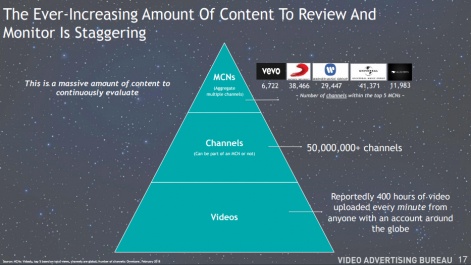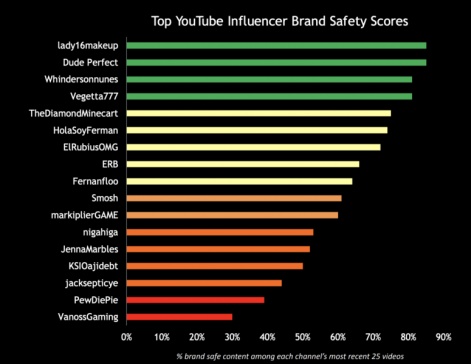Online creators are highly sought for their extensive and engaged fanbases. That kind of demographic is difficult to target unless you do it through a social media personality.
However, can you really trust an influencer with your brand name? The Video Advertising Bureau (VAB) launched a report into brand safety on YouTube and the risks that come with trusting an online creator.
Brand safety on YouTube is often questioned, and its flagship creators are quite often doing something to create an air of distrust.
Risky business
The VAB's 'Risky Business' report documents YouTube's checkered history with brand safety, from the 2015 ISIS adverts through to PewDiePie's "Nazi" era, Logan Paul's suicide forest drama and YouTube Kids' content running inappropriate adverts.
The report also explores content structure on YouTube. A reported 400 hours of video is uploaded to the platform every single minute, which means a lot of content goes online unmonitored. There's too much new content and not enough human eyes to check that it's safe.
Out of over 50 million channels, only 17,398 of them are measured in comScore's YouTube report. That's 0.4 per cent of all YouTube channels being checked for brand safety.

Unsafe creators
Even YouTube's biggest influencers ranked poorly in terms of brand safety. According to the VAB, less than 25 per cent of the platform's influencers were considered 'brand safe'.
Additionally, 67 per cent of the top surveyed channels contained unsafe language, and 61 per cent contained "negative sentiment".
All of the influencers listed are estimated to earn as much as $88 million a year, but their content is not creating an environment for brands to thrive.

Don't read the comments
It's not just video content that can create red flags. YouTube comments are notorious for being offensive, distasteful and generally negative, which also creates a poor brand environment.
Speaking to CNN last year, YouTube CEO said that “the way we manage our platform…we have community guidelines, the content we do not want to have on the platform. And the way we manage it is we have a system that by which users flag that content and so if you ever see a video that is inappropriate, that gets flagged, it gets put into a queue, it gets reviewed by a human, and that human says “does this meet our guidelines or not?” and if not, that video gets pulled down. And that’s essentially how we manage the platform.”
However, with 400 hours of content being uploaded per minute and countless comments being posted, it's almost impossible for brand safety to be completely guaranteed.
Potentially unsafe UGC content combined with unsafe public comments creates an air of distrust between platform and brand. Advertisers have no way of checking that their product is not being shown next to unsuitable content.
In fact, 36 per cent of surveyed consumers consider an ad to be an endorsement by the brand, and 37 per cent will reconsider a product if its shown alongside poor content. 20 per cent will actively call out bad advertising to the detiment of a brand, even if the brand is unaware of where their advert is being shown.
What's the message?
The general message of the report is that UGC content on YouTube is mostly untrustworthy. Millions of un-moderated channels and comments means that offensive content could pop up anywhere at any time, and a brand could unknowingly be advertising there.
However, the report does highlight that TV and film content on YouTube is generally safer. This mostly covers professionally produced news shows, TV shows, films and content with a big budget.
This encourages brands to sway more towards advertising on channels backed by a production budget or an MCN. Channels with UGC are generally labelled as "unsafe" throughout this report, which is bad news for creators that rely largely on YouTube's already dwindling as revenue.
The full report is available on the Video Advertising Bureau's website.















